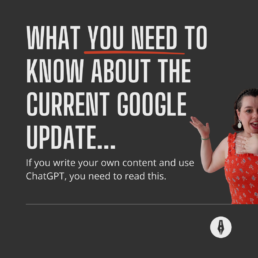How to write a homepage

Writing
Your website’s homepage is like the train station of your business. Unlike the rest of your site, it needs to hold the information for each of your ideal customers or clients (because you might have more than one), on this single page, without becoming overwhelming or confusing. Which means there will be lots of people landing on this page trying to find out what you do and how to get further information from elsewhere on your site.
Because of this, homepages can be tricky to write.
Writing your own homepage with a template
If you’re attempting to write your own copy, a template is a great place to start. And I’ve made one for you so you don’t have to go scrabbling around the internet trying to figure out how to turn a blank page into something you can publish. Just don’t nail yourself to this or any other template, because you’ll end up looking and sounding the same as everyone else who has used it.
Use this template as a starting point and amend it, expand on it, wiggle it about to make it suit your business and your voice.
The guide below can help you to write your own homepage from scratch or review your current one. It works as a stand alone guide or in conjunction with the template. If you’re completely new to copywriting I’d recommend using both the guide and the template hand in hand.
Off we gooooooooo!
Navigation
Your navigation header should show the other most important areas of your website that people can navigate to. There’s no hard and fast rule on what this should look like. You might have them across the top in a straight line, or some to the left and some to the right. You also get to choose what those areas are, depending on what your business is about and what you sell. Research shows that most of us read in an F pattern, so place your most important links to the right, as that’s where our eyes are most drawn to.
Above the Fold
The “above the fold” or “hero” section is everything you see before you scroll down. It’s the most important part because what you say there has to make people want to stay on your site. It should be really clear what you do and who you serve. Try the 5 second rule. Ask someone to look at your homepage for 5 seconds—no more—and then ask them to tell you what they understood from what they saw in that short space of time.
Your Headline, or H1, should be smart, captivating and include your main keyword.
A sub-header underneath your captivating headline, should be a statement that expands on what you do, but be reader focused. They need to see how they could benefit from working with you or buying from you.
See these examples below.

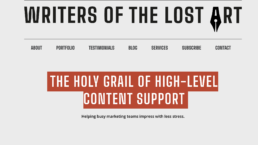
Benefits
If people scroll down the page or click into a “read more”, now is the time to sell your offering so that the reader can understand what’s in it for them. Keep it reader, or “you” focused but think about answering some of the following:
- What are the benefits of working with you or buying from you?
- Why should they choose you?
- What makes you qualified?
- What are your values?
- Why do you do what you do?
- How can that be helpful for them?
You could probably write a whole page on this, but choose your words wisely and stick to no more than 5 lines. A short introduction to you and your business.
Services or Features
Sell your services in this next part. Be clear. People want to know exactly what they’re buying or signing up for. What do they get? BUT, it also needs to be concise. Add a button so they can click through to a services page for a full breakdown of what’s included.
Social Proof / Convincing
Now you need to convince your reader that they should choose you, or go to another page on your website for more information. Social proof can be testimonials, reviews, portfolio examples, or some statistics about how many people you’ve helped or products you’ve sold or success.
About / Your Story
In this section, introduce yourself a bit more personally. Who are you? And what do you do? Add a button to click through to an “About” or “Our story” page where you can really go to town on how your business came about.
Lead Magnet
Got a freebie you want to share? A download? A webinar? A newsletter? Add it in this section. Lots of businesses produce lead magnets in which you need to give your email address in order to get access. It’s a great way to build an email list, give an incentive for people to join and for the audience, it’s low risk. However, you must make sure your freebie is high value. Give away as much as you can because it will only serve you better.
Resources
This is your opportunity to build more trust and show that you are an authority in your field. Share your blog and socials so that people can follow you. They may not be ready to buy from you yet, but willing to engage with you in other ways.
Closing Call To Action
End your page with a final call to action. This could be to sign up for a discovery call, book an introductory call, or buy a product or a service. What is it that you’ve been slowly leading people towards on this page? This is your last chance to persuade them, so make your CTA compelling.
Footer
And last but not least, your footer. Like the navigation this will appear everywhere on your site. Don’t overload it, but add important links here that you want people to be able to find and access easily. Terms & conditions, copyright, privacy policies, contact and any important logos should go here too, as well as social icons.
This is my first attempt at a page template, so I’d love to hear what you think of it. Pop me an email at danielle@writersofthelostart.co.uk if you have any feedback, good or bad!
And if you need help with your website, fill in my short questionnaire and I’ll get back to you with a quote and details of how you can take your next steps towards great copy. Yes, even if that means signposting you to someone else!
March 10, 2021
Website Updates
June 28, 2024
How to write a homepage
Get 3 months worth of blog post ideas for life coaches

Writing
Are you a life coach? Struggling with ideas for what to talk about? Staring at a blank page thinking, where do I start? Have no fear! Your SEO friendly copywriter is here!
Read on to get 24 blog post ideas for up to 1 year of content!
Do I need to blog?
If you’ve got a website, yup. You do need to blog. Because most people who are searching for your services won’t actually be searching for YOU. They’ll be typing queries into Google like “ways to reduce anxiety” or “how to change my career in my 40s”. Man o man, there are literally soooooo many search queries that might be relevant to you because you’re dealing with, well, life! And if you don’t answer these queries, or give that person searching something better than a bog standard answer that everyone and their cat has already written about, then your website is just not going to show up for them. They won’t be able to find you. Booooooooooo.
Blog post content ideas for life coaches
If you didn’t already know, as well as being a copywriter, I’m a certified life coach. And now I work with other life coaches, like you, on their copy. It puts me in a unique position to know exactly what struggles you’re going through in trying to get your message across and sell the truly life changing benefits of coaching. I write blog posts, social media posts, web copy and I give lots of tips to help life coaches write their own copy too. So pull up a comfy pew! I’m going to share 24 customisable ideas for blog posts for you. That’s 3 months (1 quarter) of content for you, if you post twice a week. Want to post less? Then that’s 6 months worth of content if you post once a week. And an ENTIRE YEAR of content if you want to post once a fortnight. I am TOO good to you!

Without further ado, here are 24 blog post ideas for life coaches. They can be customised to align with your specific niche and offer valuable insight for your audience. If you find that a topic doesn’t resonate with you or your audience, skip it! Or better still adapt it.
24 Blog post ideas for life coaches

1. Questioning mainstream personal development
You’ve probably read a ton of self-help books, listened to a zillion personal development podcasts and read a bunch of life hacking articles. The same themes and sometimes the same tips and perspectives tend to come up again and again. They gain traction and become trendy. But as a life coach, you learn how the brain actually works and how to make it work for you, not against you. Take a look at what you believe, or some of the tools or strategies you use that may go against mainstream advice. Offer your unique take and insights.
2. How to be vulnerable without causing damage to yourself
Vulnerability is, for want of a better word, trendy nowadays. People sometimes find it easier to open up to thousands of strangers online than they do to their own family and friends. It gives them visibility and can help others going through similar challenges. In fact, there are whole mental health campaigns built around talking and sharing your feelings. BUT, and it’s a big but that doesn’t get talked about enough, the main problems occur when people open up and then get ignored or, as can often happen online, get a negative response from a portion of viewers. Choosing who to be vulnerable with and how much, while understanding your own boundaries and how to protect yourself, is really important. What you do with that vulnerability, once shared, can truly empower you, or, it can really damage you. So how do you make sure it’s the former? Explore the different ways people can protect themselves online, what to do if they get a response they weren’t expecting or one that is negative and help them understand the many aspects of being vulnerable. What it really means, because it’s not always about baring your soul and sharing your deepest, darkest secrets.
3. Breaking free from hustle culture
Everyone seems to have a side hustle these days, and while there’s nothing wrong with that, it can quickly get overwhelming. Living life at 100mph every day is probably going to lead to burnout. With this topic, challenge the hustle and grind mentality by advocating for a more balanced and sustainable approach to personal and professional growth. Talk about the myth of instant success. Discuss the importance of setting boundaries, making time for yourself, and setting your own goals.
4. Digital detoxing
Address the increasingly important issue of digital overwhelm and offer strategies for building mindfulness into a daily routine. Explore how our increasingly connected and online world can also make us feel very disconnected to the present moment. Look at ways to help readers reclaim their time and attention, from digital detox challenges to mindful tech usage tips.
5. Reframing Failure
Reframing is a really powerful tool that life coaches use, but putting it into practice can take, well, practice! Discuss how the reader can shift the narrative around failure from a source of shame and make it a catalyst for growth and resilience. Share stories of overcoming adversity, practical strategies for reframing setbacks, and insights on how failure can fuel personal and professional success.
6. Productivity and purpose
Feeling like we’re not being productive enough is very common, but productivity is not the purpose of being human. It can give great satisfaction of course and many jobs measure their employees by productivity, so how do you find a happy medium? With this topic, you can explore the intersection of productivity and purpose, guiding readers to understand their joy and helping them to find a deeper sense of meaning and fulfilment in their daily lives. You can talk about any tools and practices that you use for aligning actions with values, passions, and long-term goals.

7. Living a creative life
Creativity isn’t about being able to paint a pretty picture. Dig deep on how your readers can tap into the transformative power of creativity and use it as a tool for self-expression, exploration, and healing. Share creative exercises, journal prompts, or mindfulness practices that spark inspiration and encourage personal growth.
8. Self acceptance
Encourage readers to embrace their flaws, quirks, and imperfections as fundamental parts of their unique identity. Offer strategies for self-compassion, self-acceptance, and embracing authenticity in a world obsessed with perfection. Help your reader to understand what can and can’t be changed, how to question their need for change and if it is beneficial and how to not only accept but love the parts of yourself that can’t or don’t need to be changed.
9. Analysis paralysis
It hits us all at some point, some more than others. Being paralysed by the overwhelming choice that we have can cause analysis paralysis. Explore the concept of imperfect action as a powerful way to progress and grow. Offer practical tips for overcoming perfectionism and fear of failure, and encourage readers to take bold and decisive steps towards their goals.
10. How to let go
Surrendering and letting go can be extremely challenging. It requires more than just the decision to do so. Talk to your audience about how letting go has a transformative power, can release stress, anxiety, and the need for control. Share mindfulness practices, surrender rituals, and personal stories that inspire readers to trust themselves and the ebb and flow of life.
11. Beyond Positive Thinking
Although mindset can change everything, it takes more than just deciding to be more positive. Challenge the limitations of positive thinking by exploring the profound impact of taking action, and building habits and rituals that support mental well-being and resilience. Talk about practical steps your readers can take to improve their mindset beyond an inspirational quote.
12. The Myth of Work-Life Balance
Is there such a thing as work-life balance? Or is that fast becoming an outdated notion? Is it more likely that at some times you give more to your job and sometimes you give more to your family, but it’s never an even split. What can you say to those who feel like they don’t have a good balance or that one side is making them extremely stressed, overwhelmed or unhappy. Are there alternative frameworks for creating harmony and fulfilment in all areas of life? Share holistic strategies for integrating work, play, relationships, and self-care to achieve a more balanced lifestyle.

13. Rebel behaviour
These days, living by a good moral code can seem like a rebellious thing to do! Celebrate the power of rebellion and how it can act as a catalyst for self-discovery, creativity, and personal growth. Encourage readers to challenge societal norms, find out their true joys and desires and embrace their authentic selves. Discuss how this can lead to fulfilment and success.
14. Self-expression
The first time you post on social media, or publish a blog post, it can be terrifying. Will anyone read it? What if they laugh at it? Does anyone care? But once you get past that, then it can be freeing. And then terrifying again. And possibly embarrassing. And then quite liberating once more. Self-expression isn’t easy. Lots of people think it is. Use this topic to explore the liberating journey of it and the quest for authenticity while also facing fear of criticism, and societal expectations. Offer practical tools, mindset shifts, and real-life stories that inspire readers to boldly show up as their true selves, while also setting boundaries.
15. Forgiveness
It’s often said that forgiveness is not for the other person, it’s for you, because not being able to forgive means you hold on to resentment and anger. But it’s easier said than done when you feel like someone has hurt you deeply. Share forgiveness practices, guided meditations, and personal anecdotes that help readers to see how they can release past hurts and embrace forgiveness as a daily practice.
16. Finding freedom from fear
“A life lived in fear, is a life half lived”. With this topic, challenge the narrative of fear as a limitation and explore its potential to help a person grow, gain courage and transform their life. With practical strategies and tips on shifting your mindset, you can help your audience to reframe their relationship with fear and step into their full potential.
17. Trusting yourself
The opposite of anxiety isn’t calm. It’s trust. In yourself. Trust that you’ll be able to handle anything that comes your way. With this topic, discuss how you can build trust in yourself, tap into your intuition and learn how to navigate the challenges and choices of life. You can share personal anecdotes, intuitive practices, and mindfulness techniques that show how readers can deal with uncertainty and gain resilience.
18. Healing with help
Transforming your life, going through times of great change and/or healing can feel very lonely. There’s often so much inner work that it feels hard to express what you’re going through or connect with others. With this topic, take the opportunity to examine how being part of a community or seeking connection can help. You could discuss group coaching if that’s something you offer, collective manifestation or even something as simple as spending time with friends or going to a group exercise class can help move emotions through the body. There are talking options, as well as written tools, expression through art and physical movement. All are valid. How can community help you to heal?

19. Self-Criticism
We are our own worst enemies. Most of us speak to ourselves in very critical ways, driven by perfectionism and shame. With this blog post idea you can show your audience how to practise self-compassion. Meditations, written exercises or other coaching tools could be offered to inspire readers to speak to and treat themselves with more kindness, acceptance, and love.
20. Rest and relaxation
Ever felt guilty for resting? For taking a break? Most of us have. Challenge the cultural glorification of busyness and productivity by advocating for the value of rest, relaxation, and rejuvenation. Show how it is vital for creativity, resilience, and well-being. Share practical tips, relaxation techniques, and mindfulness practices to help your audience be okay with doing nothing.
21. Values and authenticity
Sometimes it’s difficult to know exactly who you are and what you stand for. What is it that you believe in and are you living your life according to those beliefs, or do you feel you;re being swept along with the current? Help your audience to pin down their values and analyse the power of radical authenticity in living a life aligned with one’s values, passions, and truth. Show tools and exercises to help readers figure out who they are and become a more authentic version of themselves.
22. Nature
Nature is healing. We know through plenty of scientific research that it has a profound impact on mental, emotional, and spiritual well-being. You can share nature-based practices, ecotherapy techniques, and examples of real-life cases where a deeper connection with the natural world has enabled someone to heal and find solace, wisdom, and renewal.
23. Self-care
Self-care is such a buzz word. What started as a genuine exploration of treating oneself better has become almost a parody of itself. It often gets eyerolls and immediately turns some people off your content. So look at it from a different angle. Want to call it something else? Go for it. Look at some data to help back up your argument. Explore how the concept of self-care can actually be a revolutionary act of self-love, and resistance against societal pressures and expectations. Give examples of holistic self-care practices, (maybe something different from the usual bubble bath and a face mask option), and mindfulness exercises to help people honour their needs and be more present in their lives.
24. Identity
We all have a story we tell ourselves about who we are. We often give ourselves labels. Challenge the limitations of these labels and categories in defining identity and what we’re all capable of. Explore the richness and complexity of the human experience. Encourage readers to embrace their own unique complexities.
So that’s it!
24 topics you can tailor to your own audience.
If you want more ideas and more tips like how to use these for social media posts too, sign up to my newsletter and exclusive access to help you master your online copy.
Is your AI content safe to use?

Writing
Use these 12 pointers as a checklist to identify AI-written content.
AI is everywhere. We can’t avoid it and we don’t really know what lies ahead, so anyone who tells you differently is trying to sell you something.
I’m not going to whinge about it. I know it has its uses. But when I hear businesses talk about how easy it is to create X, Y and Z, from nothing, inside my head I’m screaming. There are some really great AI tools out there— sophisticated, well-designed and built. But for the average small business, it’s the attraction of tools like ChatGPT that has me worried.
Maybe you think it’s an amazing addition to your business because you can create content at speed and scale. BUT, if you rely too heavily on it, you’ll be producing really crap copy that turns people off, not to mention you can be penalised for incorrect usage of AI if it leads to spam content.
Here’s the current state of play.
- Google hasn’t and is unlikely to ban AI content. Because not all use of automation is bad. It’s been used for a long time to generate things like the weather forecast, sports results and transcription. It’s also now evolved so much that it can be used to help in many processes, including creative ones.
- However you’re producing content, (totally with AI, totally manual or a mix of both), what Google looks for is original, high-quality, people-first content demonstrating the qualities of E-E-A-T.
- E-E-A-T stands for Experience, Expertise, Authoritativeness and Trustworthiness. Trust is the most important quality here and the others contribute to it. Each piece of content you produce might hit one, some or all of these qualities.
- What many people are now using AI for, is to produce large amounts of unoriginal content that provides little to no value to users, with the primary purpose of manipulating ranking in search results. THIS! my friends, is what is a violation of Google’s spam policies as it is classed as ‘scaled content abuse’ – that is, many pages created for the primary purpose of manipulating search rankings and not helping users.
Why evaluate for possible AI content?

Checking to see if your own content or someone else’s has used AI and leaned too heavily into it can help keep your content original, unique, more interesting and more trustworthy. It can help you to avoid the pitfalls of sounding robotic and trotting out the same as others. Just remember, that while there are indicators of AI usage, you’ll never really know the truth unless you ask the person who posted the content or if you’ve done it yourself, you’ll obviously know the truth.
How to manually evaluate your content to detect AI writing.
While there are some paid and free online tools you can use to spot AI content, these can sometimes create false positives. It’s best to use a combination of both these tools and manual checks.
Here are all the manual efforts you can make. Use this like a checklist.
1. Repetition in AI content
ChatGPT and other AI writing tools repeat phrases and ideas. They often do so at a surface level, without explaining the depth of something and they lack the human ability to recognize they are essentially saying the same thing over and over.
To identify AI-generated content, look out for this repetition. A good, human copy or content writer would be able to share ideas in fewer words and expand on those ideas to give more depth rather than repeating the main topline phrases or topic.
2. Robotic Sentence structures
AI relies heavily on common idioms and phrases, often using them to excess and in the wrong way. If you see a lack of variation in sentence structure then you could be looking at AI content. The tone might feel very formal and monotonous and the sentences technical, rigid and unnatural. Look for turns of phrase and ways of opening and closing sentences that humans would rarely use, but might seem grammatically correct.
Examples of sentence starters, finishers and phrases commonly used by AI include:
In this ever-changing digital landscape…
In this blog post we’ll discuss…
It’s important to note…
In conclusion…
In the realm of…
Let’s delve into…
3. Overuse of common AI content words
One of the dead giveaways of AI content is the overuse of certain words. These didn’t start out being ‘AI’ words. They weren’t created by AI, but we’re now at a point where these words can’t be used without it signalling heavily that your content might be AI generated. I don’t advocate cutting these out of your written vocabulary altogether, because there may be times when it’s appropriate to use them, but be very mindful of when and how.
Words to watch out for include:
- Crucial
- Elevate
- Leverage
- Tapestry
- Embark
- Journey
- Foster
- Navigate
- Transform
- Delve
- Furthermore
I asked ChatGPT 3.5 to come up with opening paragraphs for life coaching benefits and how a business might choose a martech stack. These are two common topics in the coaching and SaaS spaces respectively.
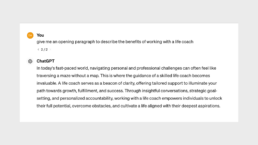
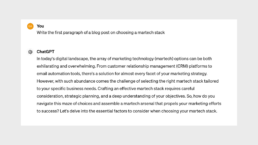
Both examples use words we’ve identified as common to AI content. They have a flowery overuse of unnecessary words.
If you were talking to a colleague about martech, would you use the phrase “with such abundance comes the challenge of selecting the right martech stack?” Or if you were explaining on a call with a potential client about the benefits of coaching, would you hook them in with “in today’s fast-paced world, navigating personal and professional challenges can often feel like traversing without a map.” No and no. Right?
4. Inaccuracy of AI content
ChatGPT 3 does not have the ability to read live data. That means if you paste in a URL and ask it to look at the copy on that page and write something similar, it won’t be able to because it can’t look at that live URL. It won’t be looking at the most recent information available.
It also has a disclaimer on its site that says, “ChatGPT can make mistakes. Consider checking important information.” Don’t just consider. Do it. Especially if you deal in anything related to the emotional, physical or financial wellbeing of your audience. Misleading or inaccurate statements can lead to more than just losing a potential customer. You have a duty as a business owner to act responsibly.
5. Robotic tone of voice
AI content generally lacks the human traits that make each of us sound like us. They don’t use unique tones of voice, colloquialisms, slang or informal language. And therefore end up sounding monotonous, boring and dry.
6. Lacks depth
AI content tends to lack depth because there is no lived experiences to share or real-life examples. Humans tend to add these things in to help explain or prove a point.
AI content uses lots of filler and fluff words that don’t add value, so the copy can sound complex and important, but not actually have any substance. If you’re creating content for your blog (and there are so many reasons to be blogging for your business) you really want to be producing articles that aren’t a waste of time for your reader.
Here is just part of what ChatGPT told me about yoga before bedtime.
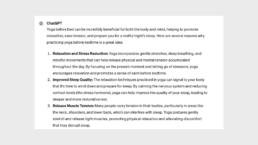
It’s all a bit vague. (There were several more numbered points). The AI content doesn’t tell me how to do any of the poses or explain exactly how the nervous system calms down. So now if I want to know more, I have to go and research it myself. It’s not really giving me anything of value.
7. Mismatched search intent
Google is pretty sophisticated. If you type in a search query, it will also assume the intent behind that query to help show you the right results. For example, if you type in “red shoes” it knows that most people are going to be looking to buy red shoes so it will show you the shopping feed first. If you type red shoes into ChatGPT you get several points on why you might want to wear red shoes – attention-grabbing, confidence booster etc.

AI content tools can’t always figure out the nuances of search queries. So if content doesn’t match the search intent behind the topic, it may have been produced by AI.
8. Lack of expertise in AI content
Expertise is one of the guiding principles from Google of creating quality content. (E-E-A-T, Experience, Expertise, Authoritativeness and Trustworthiness.) Expertise helps to give meaning, context and understanding, which AI content can’t replicate. AI tools don’t actually understand what they’re writing.
This is why complex topics often sound superficial when written about by AI, because they can’t give the first-hand knowledge that comes from being an expert in a subject matter.

This example on how to make a bed sounds like the writer has never made or slept in a bed before. It even clarifies arranging the pillows at the head of the bed, (maybe in case we end up sleeping upside down?) Generic information like this that can be found with a simple web search is likely to have come through AI.
9. Old content
As mentioned before, some AI tools do not have access to the latest data and most don’t take the relevance of that into account. So they wouldn’t know to prioritise a more recent statistic for example. They can’t update their knowledge base in real time.
Always check the sources and whether the information in your AI generated content is still relevant and recent.
10. No flow
Good writers can create a flow. A narrative that helps the reader digest the information. AI generators struggle with this so it may seem like they jilt the reader about. The content may lack a natural progression and story coming across as disjointed and difficult to follow.
11. Difficulty with humour, sarcasm and emotion
AI writers may struggle with cultural and geographical nuances, humour, social cues, or historical contexts and emotions that help give stories their depth and meaning.
Sentences may seem jarring as AI attempts to inject humour, an exclamation mark to force emotion or not be able to understand a sarcastic tone from a serious one.
Imagine the unfunny comedian whose stand up routine falls flat in front of an audience. Imagine that level of cringe in a blog post you get AI to write for you about something that’s actually quite serious but you wanted to add a couple of humorous points to so that the tone was light. I feel queasy thinking about it!
AI doesn’t have any emotional intelligence or intuition.
Human writing is more subtle and humour tends to be context-appropriate.
12. AI detector tools
There are lots of AI writing detectors out there. Copyleaks is my favourite. Some will also check for plagiarism. And while they can be helpful, they’re not perfect. They analyse using style, tone, words and phrases that merely signal AI content. They can and often have, flagged content as AI when it was human written. So use with caution alongside the other manual checks here.
Should you disclose when you’ve used AI content?
Google says there’s no rule for this at the moment, but bear in mind that this could change as AI progresses.
The best way to avoid any AI penalties
Hire a copywriter! If you’re unsure about AI content or you find it doesn’t pass the checks listed here, you might want to consider hiring someone who writes this stuff all day long.
If want your copy to be of high quality, SEO-friendly, to sound like you, be safe to use and above all to be helpful for your audience, the best way is to hire a copy or content writer to do this for you.. You’ll know for sure that you are building an authentic and genuine relationship with your audience when you hire a professional.
Tell me about your copy challenges and I’ll help you figure out that next step.
March 10, 2021
Website Updates
10 Reasons you should be blogging for your business
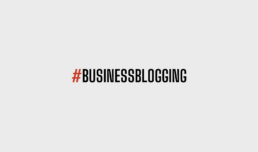
Writing
Businesses should blog. But not without purpose. It’s better to write nothing than to write something so unhelpful that it will turn people off. But knowing where to start often grabs people in a procrastination death grip.
So here is where you start!
I’m going to tell you 10 benefits of blogging, so you’ll truly understand how powerful it can be.
Bebe! Come with me.
Why is blogging important?
Before I get into the actual 10 benefits of blogging for your business, let’s just cut straight to the chase. If you’ve got a business with an online presence, whether it’s product or service based, you want people to buy from you. No one is living for free. We all need to make money. So don’t be coy about it.
Every reason in this list ultimately leads to more sales. They might not be reasons that you can easily and directly attribute to a sale, but they matter. Just look at these stats:
- Marketers who prioritise blogging are 13x more likely to have a positive ROI on their efforts.
- 61% of the most effective B2B content marketers meet with their content team daily or weekly.
- 64% of B2B marketers outsource blog copywriting.
- 60% of marketers have a documented personalization strategy.
- 57% of marketers say they’ve gained customers specifically through blogging.
- 53% of marketers say blogging is their top content marketing priority.
- B2B marketers who have blogs get 67% more leads than those who don’t.
- Around 60% of marketers will reuse blog content 2-3 times.
10 Business blogging benefits
1. Increase visitors to your website
If you’re already on someone’s radar, great. They can type your name straight into Google and reach your site. But if they’re not aware of you, they’re more likely to type in a question or a statement – maybe a product name. Every time you publish a blog post that talks about what you sell, answers questions and helps your audience make a more informed choice, you’re serving up another path, straight to your door.
Not only that, but most of your website pages probably stay pretty much the same, the majority of the time. Updates might be rare. But blog posts? Blogs can be updated as often as you want, and every time your site is updated, it sends a cue to search engines that you’ve got an active website that’s being updated regularly and they should frequently be checking it for any new and helpful content.
2. Increase visibility of your website
Picture this: You’re a life coach. You sell life coaching 1-1 packages. Someone is fed up with feeling stuck in their life and they type into Google, “How to stop feeling stuck in life”. Up pops a number of websites offering advice on how to come unstuck. Yours doesn’t. Because although you offer a service that does exactly that for people, you don’t really talk about it on your website.
The more genuinely helpful questions you can answer and content you can provide for your audience, no matter what state of awareness they’re in, the more chance you’ll have of showing up in search results when someone needs you to.
3. Grow your email list
If you follow me on LinkedIn or Instagram, you’ll know that I talk often about claiming your owned content. That is, content and information that can’t be whipped away from you when a platform goes offline, has a glitch or, shock-horror, the internet goes down.
Social media doesn’t belong to you. An email list of subscribers, does!
Adding conversion-focused opt-in forms or CTA hyperlinks and buttons to your blog posts means that if people land there through other means, they can add themselves to your email list to make sure they’re kept up to date with any news you want to share with them on a regular basis.
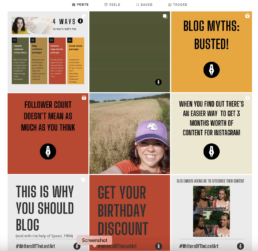
4. Attract new customers
Blogging for your business helps you get discovered. Not just through search engines, but through social media and emails too. Giving people content that is shareable helps to expose your business to new audiences, AND, (my favourite part), gives you content that you can break up, repurpose and refresh for your social platforms. Your blog and your social media should work hand in hand to make it easier for you to create content. One feeds the other, keeping everything relevant and cohesive. Two things your audience will love!
5. Delight returning customers
Delighting customers is about giving them such a great customer experience that they come back for more and rave about you to their peers. Got a loyalty programme for your business? Blog about it. A recycling scheme for your packaging? Blog about it. A reward system for when a customer gives feedback? Blog. about. It!
Let the world see how much you care about your customers not just before they buy, but after the sale too.
6. Educate and engage
Many purchases online are made after the buyer has researched the product. They may want to understand how it works, how it’s made, what values your company has. Blogs are a part of this buyer journey. But it’s very rarely a linear journey. They might hop from a blog post to a customer review platform and then forget about it for a while. A couple of weeks later they might find you on social media and then go back to another blog post. They might even return to the same blog post multiple times. The journey can last a few hours, days, weeks or even months. Which is why it’s important to keep on answering questions from potential customers, and addressing their pain points and barriers to buying. But do so in a way that is engaging. Because you want them to take the next step in their journey. And the next one after that. Until they’re ready to buy.
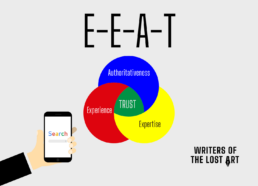
7. Build trust
Building trust is such a key component of creating any content for your business. Google guidelines advise following E-E-A-T principles. Experience, Expertise, authoritativeness and Trustworthiness. The most important of these elements is trust. That’s because Google says, “untrustworthy pages have low E-E-A-T no matter how Experienced, Expert, or Authoritative they may seem.” People are more likely to buy from brands they trust. They’re more likely to return to brands they trust. They’re more likely to advocate for brands they trust. Blogging helps to build that trust by showing you have experience, expertise and are an authority in your industry / market. It gives you the opportunity for people to see behind the scenes and know the values of your business too.
8. Expand your brand
Blogs can be shared and commented on. It doesn’t have to be a one-way thing. And the more people engage with it, and share it, the more reach your brand will have. Which means increased brand awareness and new audiences.
9. Drive conversions
It’s quite rare that someone will land on a blog post and immediately purchase what you have to offer. But, they are a very important part of the buyer journey and can nudge people one step closer to conversion. They can do this by including eye-catching headlines, talking about benefits rather than features, using images and videos, having persuasive calls to action and being written with the right audience in mind.
10. Separate yourself from your competitors
If you can provide what your competitor cannot, you’re going to increase your chances of building trust, search visibility, brand awareness and all of the other 9 points in this list.
So there you have it. TL:DR – There are lots of great benefits of blogging for your business, all of which ultimately drive revenue. So if you’re not blogging, why not?
Blogging without a plan however is just going to give you a scattergun approach. So if you don’t know where to start, get in touch for a chat. I’ll help you figure out what that first step is for you and your business.
June 28, 2024
How to write a homepage
April 18, 2024
Is your AI content safe to use?
How To Hire A Copywriter

Writing
Hiring a copywriter will be one of the most important marketing decisions you’ll make for your business. Sure, there are plenty of cheap and fast options through sites like Fiverr and Upwork, but there’s also a high probability that the work will not be to the standard you need. The old adage is usually true here. You really do get what you pay for. So before you make any hiring decisions, make sure you read this article to put you in the best position possible.
Copywriting Tips
A good copywriter is going to be aware of the following, and so you should be too.
- Knowing the Audience: Understanding your audience’s needs, interests, and pain points is crucial to creating effective copy.
- Use of Power Words: Power words are emotionally charged words that can persuade readers to take action. They should be suited to your brand, however, and used at the right time in the right way. Not everything needs to have a sense of urgency for example.
- Focus on Benefits, Not Features: Highlighting the benefits of a product or service helps readers understand how it can meet their needs and solve their problems. For example, would you like to learn a 5-minute breathing exercise that can be done anywhere, anytime, that slows down your heart rate? OR, would you like to reduce your anxiety in 5 minutes?
- Keep it Simple: Clear and concise copy is easier for readers to understand and remember.
- Test and Refine: Testing different versions of copy can help identify what works best and refine your messaging over time. This is especially true when launching a new business, product or service.
What to Look for When Hiring a Copywriter
If you’re interviewing or putting out a job ad for a copywriter, or maybe you’re just searching online for someone, look out for or ask about the following skills and qualities.
1. Creativity
A skilled copywriter needs to be creative to come up with messaging that stands out from competitors. They need to be able to think outside the box and craft messaging that is unique to your brand.
2. Research Skills
A skilled copywriter needs to have strong research skills to understand your industry, target audience, and competition. They need to be able to conduct research that informs their messaging.
3. Persuasion
Copywriting is all about persuasion. A skilled copywriter needs to be able to craft messaging that persuades people to take action, whether it’s buying a product, signing up for a service, or supporting an idea.
4. Attention to Detail
Copywriting is not just about crafting a message, but also ensuring that it’s error-free and polished. A skilled copywriter needs to have an eye for detail and be able to proofread their work thoroughly. A good understanding of grammar, and spell checking are a must.
5. Adaptability
A skilled copywriter needs to be adaptable and able to write for different mediums and audiences. They need to be able to adjust their tone, messaging, and style to fit the needs of the project. They need to be able to understand you, your business and brand and your audience’s needs and wants.
6. Understanding of Marketing and Psychology
A skilled copywriter needs to have an understanding of marketing and psychology. They need to be able to tap into the emotions of their target audience and create messaging that motivates them to take action.
"I have a very particular set of skills"
How to Find a Skilled Copywriter
Now that you understand the importance of skilled copywriting, you might be wondering how to find a copywriter that meets your business’s needs. Use the following tips as a checklist when reaching out or interviewing.
1. Look for Experience
When looking for a copywriter, experience will likely cost more, but will also get you a much higher quality of work. Look for a portfolio that showcases their previous work, and make sure that they have experience in your sector/industry and a style of writing that you like and that you could see adapting well to your brand.
2. Check References or Testimonials
Don’t be afraid to ask for references from previous clients or workplaces. This can give you insight into their work ethic and whether they’re reliable. A lot of writers who work freelance, like me, have testimonials on their website or they can be made available at request.
3. Communication is Key
When hiring a copywriter, communication is key. Make sure that they understand your business’s goals and can communicate with you effectively. In this post-pandemic world, more business is done online and remotely than ever before. Video calls, emails, slack, Teams, Trello – there are countless ways to keep in touch. It’s best to set out your expectations before any work starts. For example, if you would like daily or weekly updates and via email rather than slack, ask if this is possible.
4. Get a Quote
Before hiring a copywriter, get a quote for their services. The more specific you can be with your brief, the better. Copywriting doesn’t just involve actual writing. There may be subject/topic research, keyword research, proofing and editing involved too. So a 1,000-word article may take longer than you think. Some copywriters charge by the hour, some by article, and many have day rates. They can also charge per word or by the project. The better the scope and brief you are able to give, the less room for error or confusion.
If you’re ready to start gathering this info and find yourself the perfect copywriter, why not start with me! Pop your particulars here with a short note and I’ll be in touch. Or email danielle[at]writersofthelostart.co.uk.
April 16, 2024
10 Reasons you should be blogging for your business
June 28, 2024
How to write a homepage
All About Copywriting

Writing
Don’t worry. You’re not the first to wonder what a copywriter actually does, or get it mixed up with copyrighting (totally different thing.) If your business is new or just launching online, you might have no idea where to start. So let me introduce you to the world of a copywriter and help you understand why you probably need one. Trust me, it’s going to make those website conversations so much easier.
What is Copywriting?
Copywriting is a specialised form of writing that aims to persuade readers to take a specific action, such as buying your product, signing up for a service, or clicking a link. It is a vital component of marketing and advertising that seeks to engage, inform, and compel audiences to act.
“I don’t think anyone wants to be one of a hundred colors in a box.”
What is a Copywriter?
A copywriter is a person with those specialised writing skills, who will write the copy, (words), for your website and other marketing materials such as emails, leaflets, posters and social media posts. There are many different ways to market your business and so you’ll often find that copywriters specialise.
Types of Copywriting
There are several types of copywriting, including:
- Direct Response Copywriting: This type of copywriting aims to elicit an immediate response from the reader, such as making a purchase or filling out a form.
- Brand Copywriting: This type of copywriting is focused on creating and promoting a brand image through messaging and storytelling.
- SEO Copywriting: This type of copywriting aims to improve website rankings and attract organic (unpaid) traffic. It optimises content for both readers and search engines to easily understand.
- Content Marketing Copywriting: This type of copywriting focuses on creating valuable and informative content that attracts and engages potential customers.

Why is Copywriting Important?
Effective copywriting can drive sales, increase brand awareness, and establish a strong online presence. These days, if you’re not online, you’re missing a huge chunk of potential customers.
Copywriting allows businesses to communicate their message to their audience in a compelling and persuasive way, as well as helping to establish credibility and build trust with customers. Trust is one of the major signals that search engines use when ranking websites, so it can heavily impact whether you rise to the top or sink to the bottom of search results.

Help me, help you
Why Use a Copywriter? Why Not Just Do It Yourself?
You wouldn’t try to rewire your own house if you’re not an electrician. Well, you could try, but it would likely end up in disaster and cost you more money to fix.
A skilled copywriter has the knowledge and experience to create a meaningful connection with the reader, tapping into their emotions, and motivating them to act. Getting it right will set successful businesses apart from their competitors. Here’s why hiring a professional is worth it.
1. Increase Sales
Copywriting is all about persuasion. A skilled copywriter can craft a message that resonates with your target audience, leading to more sales. Good copy can convince people to take action and buy your product or service.
2. Improve Brand Awareness
Copywriting is also about creating a unique voice for your brand. Telling your story, your way. A skilled copywriter can create messaging that sets your business apart from others in your industry, by bringing out the authenticity and integrity of your brand. This can lead to improved awareness and recognition.
3. Boost Your Website’s SEO
SEO, or search engine optimisation, is the practice of optimising your website to rank higher in search engine results pages. Skilled copywriting is an integral part of making sure readers and search engines find your website a good experience, full of expertise, authoritativeness and trustworthiness. These four components, also referred to as E-E-A-T are key points used by Google to assess whether your website is high quality and whether it contains helpful content.
4. Establish Trust
Trustworthiness is also vital in the relationship you build with your audience. A skilled copywriter can create messaging that establishes trust with your target audience, making it more likely that they will become loyal customers and advocates for you.
5. Save Time
If you’re a busy business owner, you likely don’t have time to craft high-quality messaging for your business. Hiring an experienced copywriter can save you time and stress, allowing you to focus on other essential aspects of your business.
March 10, 2021
Website Updates
June 28, 2024
How to write a homepage
Website Updates

Writing
"Oh, it's alive! It's alive! It's alive!"
Is Updating A Website Ever Really Over?
Nope! It’s not. I won’t lie. It’s like a house. You start on one room, move on to the next and by the time you’ve finished the whole house you need to start again. Unless the dog has chewed the carpet in the living room or the kids have drawn on the walls. Then you might need to go back sooner than planned. But, at least I’m under no illusion.
I did however want to let you know that as I’m in the early days of this website, it will probably change and be updated most weeks for the foreseeable future.
That’s because I’m loading it with content. Refining my offering. Making sure that I give you the info you need when you come here. And I’m open to any feedback.
So, if you spot anything iffy – a page that doesn’t work, or lead to the right info, or there’s something you’d like to see me write about, I’d love to hear from you.
March 10, 2021













